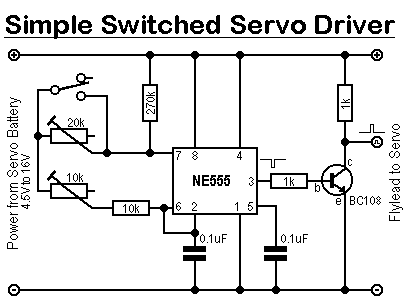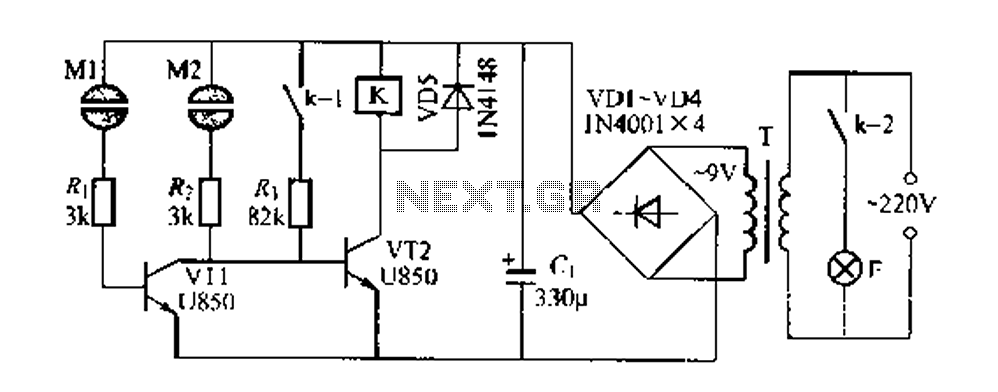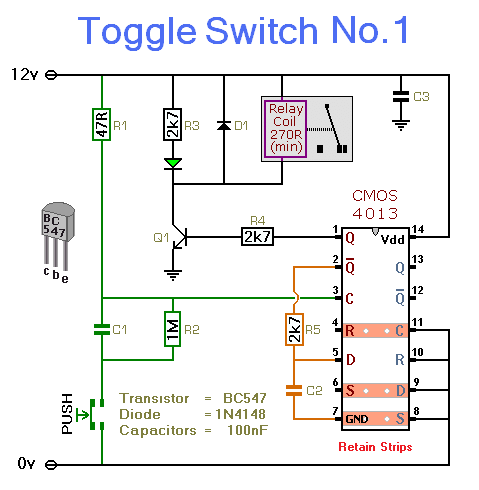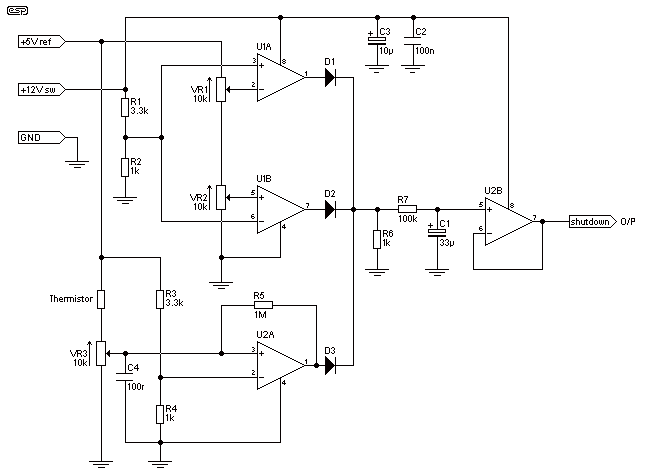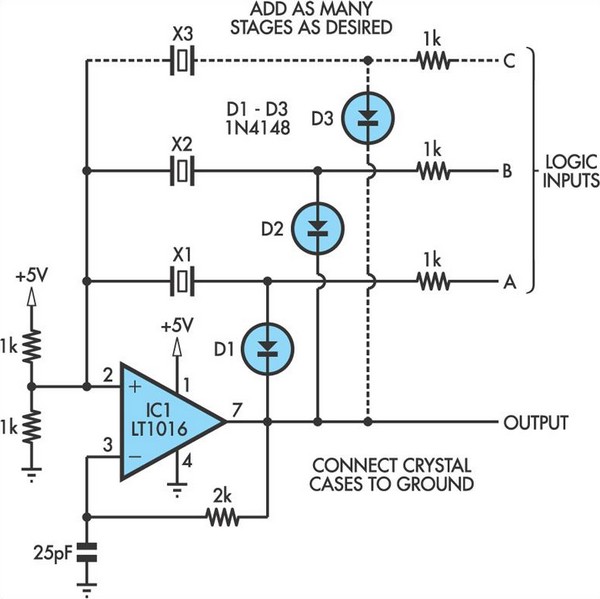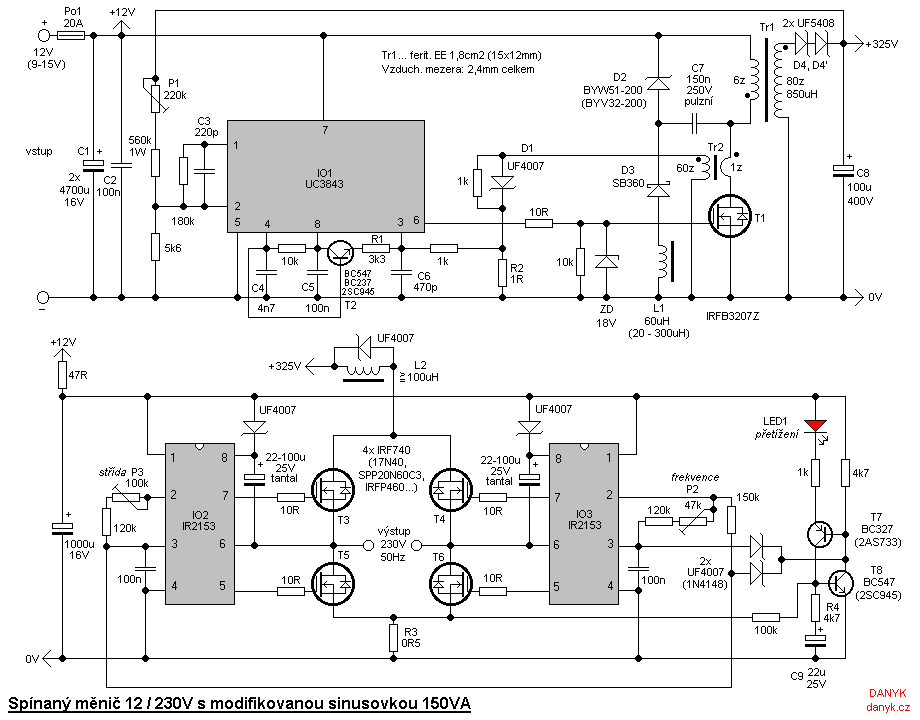
Basic Thyristor Switch
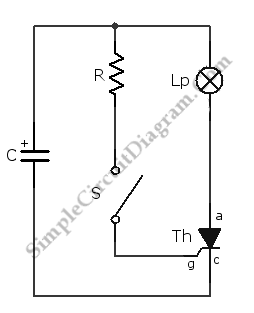
The silicon controlled rectifier (SCR), commonly referred to as a thyristor, functions similarly to a diode. When the cathode is negative relative to the anode, current can flow.
The silicon controlled rectifier (SCR) is a semiconductor device that plays a crucial role in controlling power in electronic circuits. It is a four-layer, three-junction device that can be turned on by applying a small gate current, allowing it to conduct current between the anode and cathode when a specific voltage threshold is surpassed.
In its off state, the SCR behaves like an open switch, blocking current flow. When a positive gate pulse is applied, the device transitions to its on state, allowing current to flow from the anode to the cathode. The SCR remains in this conducting state until the current flowing through it falls below a certain threshold, known as the holding current.
SCRs are widely used in applications such as phase control in AC power circuits, motor speed control, and in rectifiers for converting AC to DC. They are favored for their ability to handle high voltages and currents, making them ideal for industrial applications. Their characteristic switching behavior can be exploited in various power electronics circuits, including inverters, converters, and regulators, enabling efficient energy management and control.
In a typical circuit schematic involving an SCR, the device is represented by a symbol that includes three terminals: the anode (A), cathode (K), and gate (G). The gate terminal is connected to a control circuit that provides the necessary trigger signal to turn on the SCR. Protection components such as snubber circuits may also be included to safeguard against voltage spikes and transients, ensuring reliable operation in demanding environments.
Overall, the SCR is a versatile component in modern electronics, providing efficient control over electrical power in a wide range of applications.The silicon controlled rectifier (S.C.R.) is called as the thyristor. It is like a diode, when the cathode is negative with respect to the anode, the current.. 🔗 External reference
The silicon controlled rectifier (SCR) is a semiconductor device that plays a crucial role in controlling power in electronic circuits. It is a four-layer, three-junction device that can be turned on by applying a small gate current, allowing it to conduct current between the anode and cathode when a specific voltage threshold is surpassed.
In its off state, the SCR behaves like an open switch, blocking current flow. When a positive gate pulse is applied, the device transitions to its on state, allowing current to flow from the anode to the cathode. The SCR remains in this conducting state until the current flowing through it falls below a certain threshold, known as the holding current.
SCRs are widely used in applications such as phase control in AC power circuits, motor speed control, and in rectifiers for converting AC to DC. They are favored for their ability to handle high voltages and currents, making them ideal for industrial applications. Their characteristic switching behavior can be exploited in various power electronics circuits, including inverters, converters, and regulators, enabling efficient energy management and control.
In a typical circuit schematic involving an SCR, the device is represented by a symbol that includes three terminals: the anode (A), cathode (K), and gate (G). The gate terminal is connected to a control circuit that provides the necessary trigger signal to turn on the SCR. Protection components such as snubber circuits may also be included to safeguard against voltage spikes and transients, ensuring reliable operation in demanding environments.
Overall, the SCR is a versatile component in modern electronics, providing efficient control over electrical power in a wide range of applications.The silicon controlled rectifier (S.C.R.) is called as the thyristor. It is like a diode, when the cathode is negative with respect to the anode, the current.. 🔗 External reference
Warning: include(partials/cookie-banner.php): Failed to open stream: Permission denied in /var/www/html/nextgr/view-circuit.php on line 713
Warning: include(): Failed opening 'partials/cookie-banner.php' for inclusion (include_path='.:/usr/share/php') in /var/www/html/nextgr/view-circuit.php on line 713
